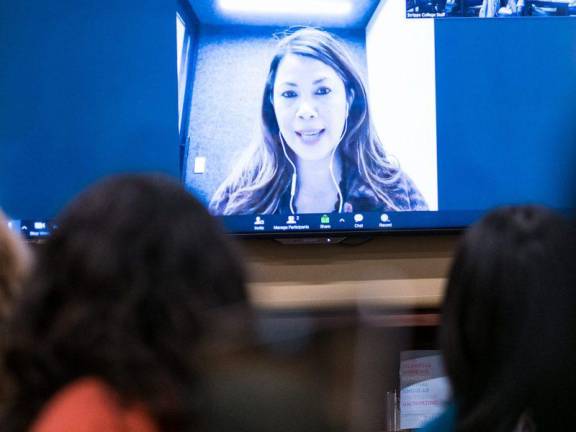A Roadmap for High-Quality Online Education
The abrupt switch to online learning during the pandemic wasn’t ideal, but has offered some valuable lessons

The March 2020 shift from face-to-face classes to what many call “Zoom University” was triage for faculty and administrators accustomed to being in the same room as their students. The cobbled-together approach could be compared to building an airplane while it’s flying.
The pivot to emergency remote learning differed greatly from what is considered high-quality online education, said Deb Adair, executive director of Quality Matters, a nonprofit that seeks to measure and guarantee quality in online courses. Top-notch online education requires planning the entire course before it runs; laying out materials and defining learning objectives; and ensuring accessibility for all students, she said.
“That is a lot of work that’s done before the class even starts; there was no way that institutions could get that done in the week or two weeks that they had before they had to move everything online,” Adair said.
Though the pandemic forced colleges to make adaptations on the fly, those moves almost certainly provided a “sneak preview of higher education’s future,” according to a new report from the progressive think tank New America.
The report, “Back to Basics: Quality in Digital Learning,” highlights successes and failures of the past 17 months and makes policy recommendations for how to make high-quality online education more accessible in the future, even as many students return to physical classrooms.
It also lays out several essential elements of successful online education, including clear learning objectives; organized class structure and clear communication; and access to supportive technology. Online courses, like in-person courses, the report says, should also encourage student connection and community.
Alejandra Acosta, a higher education policy analyst at New America and an author of the report, said: “We all knew that the internet was important before the pandemic but didn’t realize how important it was. It is basically a basic need at this point, maybe not as basic as food and shelter, but pretty close to that.”
She said higher education leaders have the opportunity to restructure as a result of the pandemic, rather than just going back to what used to be considered normal.
To get a better understanding of what has happened in online classrooms since March 2020, Acosta said, the report’s authors spoke to more than 50 students.
Some students, they reported, said their experiences with emergency remote learning during the pandemic were disorganized, confusing and stressful. Other students recall being unclear about the purpose of assignments and said they struggled \with motivation in the online environment.
The report lays out policy recommendations to improve online education, including universal access to technology and quality internet service and a federal grant program for professional development.
The authors urge the federal government to ensure affordable, quality, reliable internet service for all college students by expanding a pandemic program that gave stipends to qualifying families. And the report says the federal government should create a grant program to get devices to students who need them.
Even after the pandemic, students will rely on technology regardless of whether they are in a face-to-face classroom or not, the report says, adding: “Without the proper technology, students will not be able to succeed in online education, regardless of how well faculty are trained or how a course is structured.”
Adair said the report left out an important component of designing successful online education programs: instructional designers. These are experts who study the science of learning, and understand both the technology and how to work with faculty. They often partner with faculty members to design online courses to make them effective and accessible.
The report also calls for improved data collection for online education programs and more funding to research online learning in higher education. Specifically, the authors want information about which schools moved to emergency remote learning during the pandemic and what the outcomes were for students. And they want data showing exactly how different student demographic groups fared.
“In order to know what needs to be fixed, you need to know what’s happening,” Acosta said. “And in a lot of ways, we don’t know what’s happening in higher ed because the data infrastructure that we have is insufficient.”
Some data cited in the New America report shows equity gaps in online education outcomes, including one study conducted in California that found students who took online classes were more likely to have to repeat a course, and another conducted in Washington state that found lowered academic performance in males, students with lower GPAs, and Black students when courses were taken online.
Barbara Means, executive director of learning sciences research at the nonprofit organization Digital Promise, said she is skeptical of research on post-secondary online education programs because historically, online programs have been more appealing to students with full-time jobs, student parents and other nontraditional students who might face additional barriers to their education.
“I just think we need to be careful that we’re not treating it like a horse race between online and blended and face-to-face instruction,” Means said. “I do think we really need to look at, as they say, the practices and design elements that seem to really produce the best outcomes for students of color and low-income groups.”
This story was produced by The Hechinger Report, a nonprofit, independent news organization focused on inequality and innovation in education.
“We all knew that the internet was important before the pandemic but didn’t realize how important it was. It is basically a basic need at this point, maybe not as basic as food and shelter, but pretty close to that.“ Alejandra Acosta, higher education policy analyst, New America